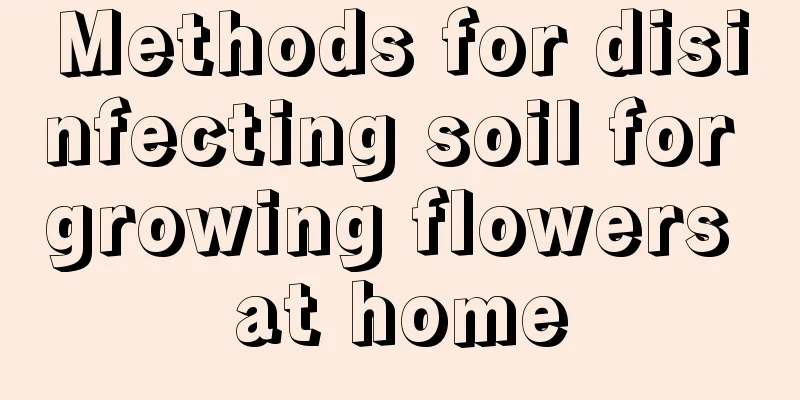What should I do if the cow has poor appetite?

|
For us cattle farmers, the most common problem is that our cattle have poor appetite and eat less. Once this happens, it will lead to poor physique of the cattle and slow production, which will bring great losses to the cattle farmers. So what should we do if the cattle have poor appetite? Let’s take a look below. 1. What should I do if the cow has poor appetite? 1. Disease factors Disease factors are one of the important reasons leading to loss of appetite in cattle. For example, gastritis, enteritis, etc. can lead to decreased digestive function, thereby affecting the appetite of cattle. In response to this situation, we must take appropriate measures in a timely manner. We can give cattle the Diarrhea Taibao Injection, which can regulate the cattle's intestines well and stop diarrhea quickly. 2. Feed factors Feed factors can also affect cattle's appetite. Poor feed quality, nutritional balance, staleness or mold can all lead to appetite problems in cattle. In addition, the feed contains mycotoxins, and mold cannot be seen with the naked eye. If cattle consume feed containing mycotoxins for a long time, it will cause damage to their gastrointestinal tract, indigestion, and poor appetite. We can mix the feed for cattle with: Kemeitaibao, which can effectively eliminate the mycotoxins in the pig's body, improve the resistance of cattle and enhance the appetite of cattle. 3. Environmental factors The breeding environment also affects the appetite of cattle. A poor breeding environment, such as too high or too low temperature, excessive humidity, poor ventilation, etc., will have an impact. In addition, high stocking density and lack of exercise can also have an impact. We need to ensure a good breeding environment, adjust breeding density, improve ventilation conditions, maintain appropriate temperature and humidity, etc. Providing ample space for exercise and proper exercise are also effective ways to increase appetite. 2. What can cows eat to increase their appetite? 1. Anthelmintics Feeding anthelmintics to cattle is an effective way to improve their appetite, because cattle are easily infected with various parasites during their growth. The long-term presence of parasites will affect the cattle's digestive system and cause a decrease in appetite. Therefore, we need to regularly use Avermectin transdermal solution from Livestock and Animal Husbandry to deworm cattle. It can not only remove parasites in the cattle's body, but also improve the cattle's digestive system and increase the cattle's appetite. 2. Stomachic medicine Feeding cattle with stomachic drugs is also one of the ways to increase their appetite. We all know that the cow's stomach is an important organ for digesting food. If there is a problem with the stomach function, the cow will lose its appetite. Therefore, we can buy Anwei Taibao from Chu Xiaomu in the veterinary medicine market. It contains a variety of Chinese medicines that can help cattle adjust their stomach function and increase their appetite. 3. Edible salt Feeding cattle with edible salt is also a way to increase their appetite. Because edible salt is an important mineral that has an important impact on the normal physiological functions of cattle. We can provide cattle with an appropriate amount of edible salt, which can not only increase the cattle's interest in feed and improve their appetite, but also promote enzyme activity and gastric juice secretion in the cattle's body, which helps digestion and absorption of food. 4. Baking soda Feeding baking soda to cattle is also a way to increase their appetite. Because baking soda can regulate the acid-base balance in the cow's body and improve the function of the digestive system. We can add an appropriate amount of baking soda to cattle feed, which can not only increase the taste of the feed, but also stimulate the appetite of cattle and increase their growth. In short, when it comes to the problem of loss of appetite in cattle, we need to consider many factors comprehensively. Start from many aspects such as health status, feed quality, and breeding environment. Pay more attention to the condition of the cattle and take appropriate measures to ensure their health.
|
<<: Maintenance method of baby's breath
>>: Grape disease pictures and prevention methods
Recommend
How to grow red-backed peperomia with red leaves
Growth conditions of red-backed peperomia Red-bac...
How to grow a small cactus potted plant
Small cactus growth habits Cactus is a desert pla...
How to cultivate monkey tail column and how to take cuttings
1. Breeding methods 1. Soil: It likes soil with g...
Can windmill jasmine be hydroponically cultivated? (Cultivation methods and precautions for hydroponically cultivated windmill jasmine)
Windmill Jasmine Hydroponics Windmill jasmine can...
How much does a carnation cost and who should it be given to?
1. How much is one flower? There is no fixed pric...
How long does it take for Orange Monroe to adapt to the pot?
Orange Monroe acclimatization time The best time ...
Are lilies shade-loving or sun-loving plants?
Do lilies prefer shade or sun? Lily is a plant of...
How to grow tiger skin plant in summer
1. Reasonable lighting Tiger Piranha is relativel...
If gardenia drinks some magic water, it will immediately turn green and ooze oil, and it will grow wildly and cannot be stopped!
Overwatering causes yellowing leaves The end of t...
How many pounds of red beans are produced per mu
Yield per mu of red bean If adzuki beans are mana...
The difference between Cymbidium and Molan
1. Leaves If you are not sure what they are, Huah...
Cheap and easy to grow succulents, they can be as beautiful as a fairy even if no one cares about them
Maiden Heart The leaves of Maiden Heart are cylin...
The truth behind the succulents that drive millions of people crazy is revealed after reading this
Corolla Prism & Fairy Cup Snow Lotus & Lu...
How to propagate copper coin grass
How to propagate copper coin grass There are thre...
Cultivation methods and precautions of net-grass
Farming methods Light and temperature Net-veined ...









